
Rulers from the times of enlightened absolutism, monarchs and princes from other historical eras, as well as simply large landowners left behind many different architectural landmarks in Germany. Some of them do not fit within the framework of the usual ideas about palatial architecture and landscaping art, causing surprise and awe. Among them is this picturesque 35-meter Rakotzbrücke (Rakotzbrücke) bridge, nicknamed the Devil’s or Devil’s.
Rakotzbrücke
Rakotzbrücke bridge in spring during rhododendron blooming

“Basalt Organ” in Kromlau Park
The Rakotzbrücke Bridge was built in basalt about a century and a half ago in the Kromlau Azalea and Rhododendron Park in the Upper Lusatia region on the Polish border. The German name for Lake Rakotzsee uses the Upper Lusatian language word – “Rakotz” (cancer). The length of Lake Cancer is about three hundred meters, the width is from thirty to fifty meters. The bridge is in the middle. Not far away is a stone “organ” made of basalt pillars.
We will continue to discover various curiosities and curiosities at Wilhelmshöhe Mountain Park in Kassel, a UNESCO World Heritage Site, which also has its own Devil’s Bridge, but it is not the main one here.
Wilhelmshohe Park in Kassel
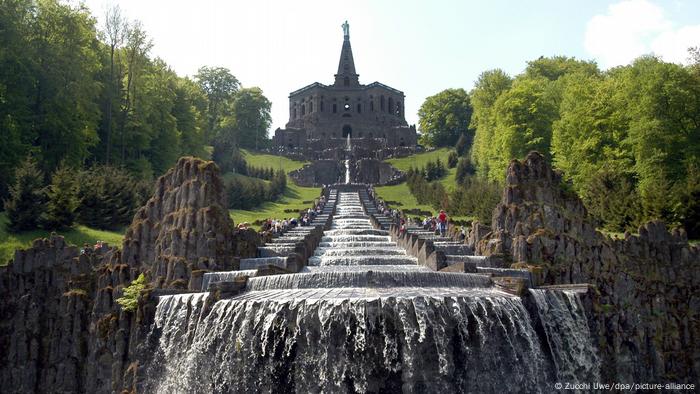
Cascade of artificial waterfalls in Kassel
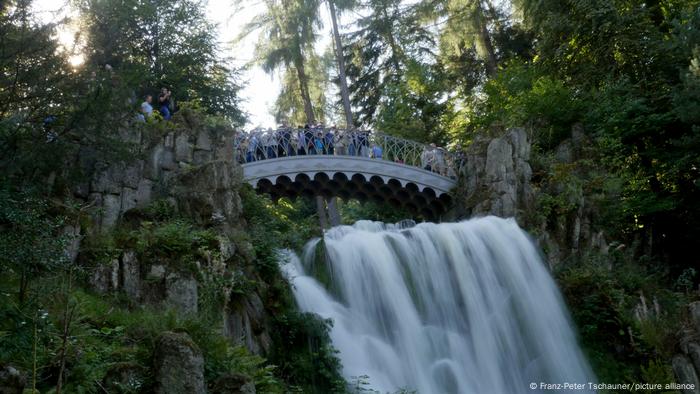
Devil’s Bridge in Wilhelmshöhe Park
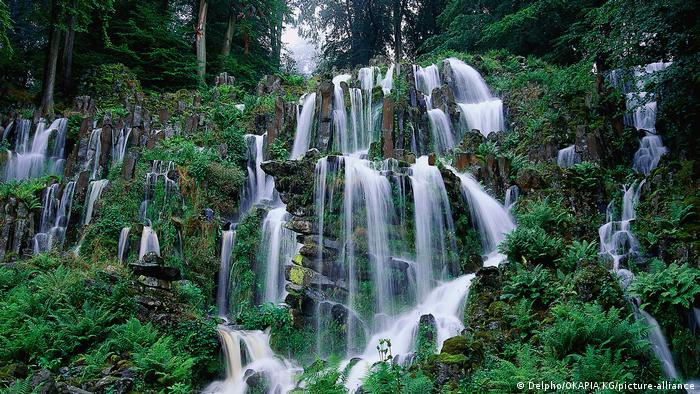
The cascade of fountains and waterfalls is a unique work of landscape art, whose technical basis consists of an ingenious system of reservoirs, ponds and canals – without the use of any pumps.
The Landgraves and Electors of Hesse-Kassel were involved in the creation of this landmark throughout the 18th century. As a result, waterfalls of fountains, an English landscaped park and a classicist palace appeared here. At the highest point of the Wilhelmshöhe park, there is a monument to Hercules, created following the example of ancient sculptures and which has become the main symbol of Kassel.
The scenic kingdom of Dessau-Wörlitz
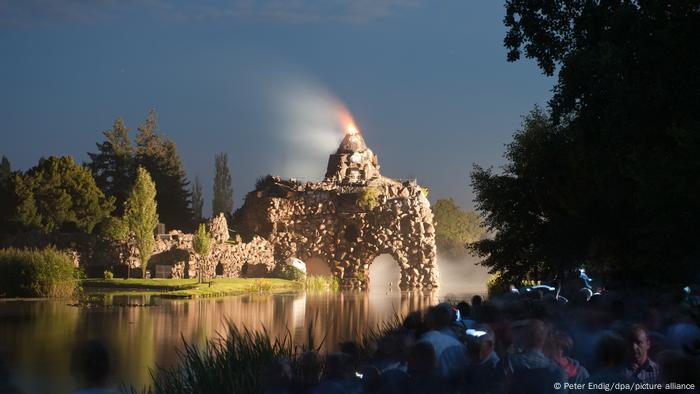
The eruption of Vesuvius Wörlitz in 2010
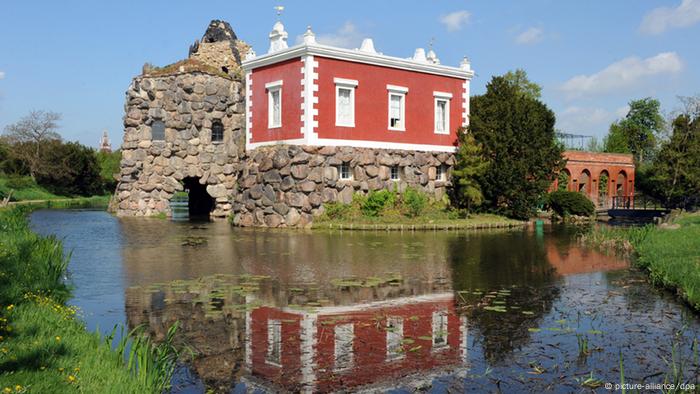
“Wörlitz Vesuvius” is located on an artificial stone island Stein
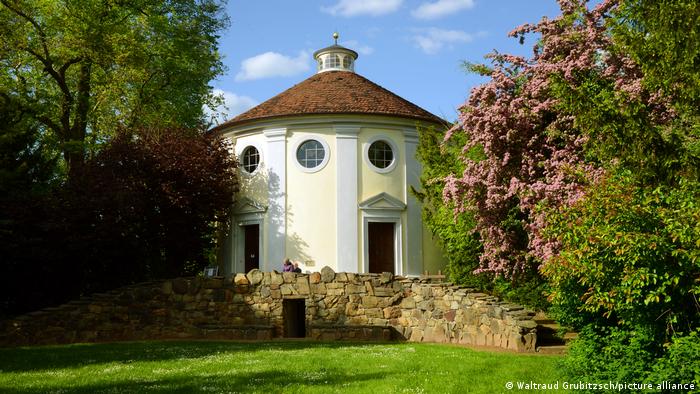
Synagogue in Wörlitz Park
From Hesse we will go to Saxony-Anhalt – to the Garden and Park of the Kingdom of Dessau-Wörlitz, also included in the World Heritage List. The prince, who ruled these places for several centuries, was a great lover of Italy and even ordered the creation of a working model of Vesuvius near his residence.
Unfortunately, traditional fireworks displays will no longer be held here. The decision was taken in 2020 as it jeopardized the safety of this unique historical object: cracks appeared in the structure after the eruptions. The pyrotechnics were replaced by a light show, without vibrations and emissions into the atmosphere.
In the residences of German kings and princes, of course, there were Catholic or Protestant churches – right in the palaces or somewhere close by. However, Wörlitz Park also has a synagogue built in the form of an ancient Roman temple. It was erected at the behest of Prince Leopold III Friedrich Franz (1740-1817) to demonstrate religious tolerance.
Schwetzingen Palace
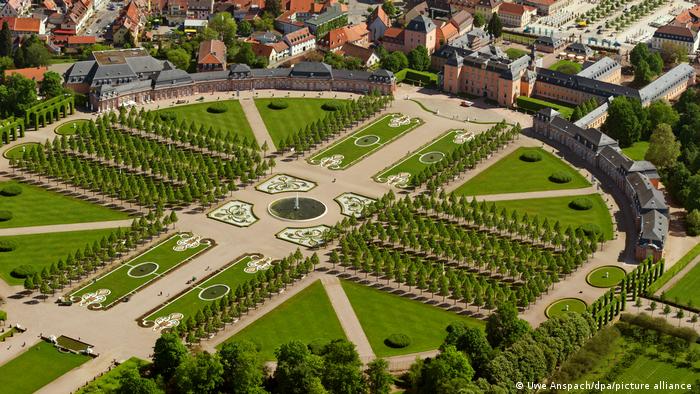
Palace and central part of the park in Schwetzingen
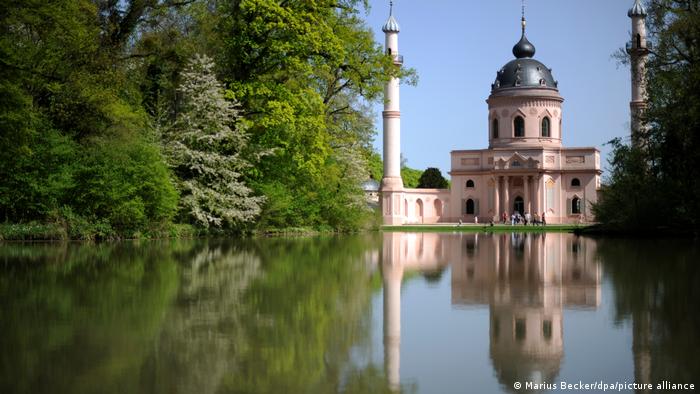
Red Mosque in Schwetzingen
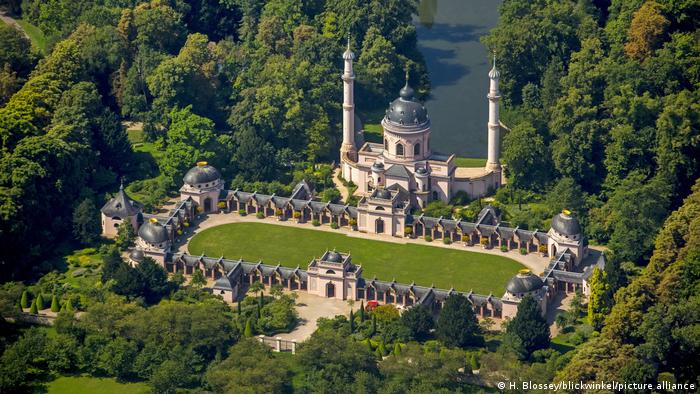
Red Mosque and Turkish Garden in Schwetzingen Palace Park
These photos were taken in Schwetzingen, Baden-Württemberg, where in the park of the former residence of the Electoral Hall rulers there is a mosque built in the late 18th century under Elector Karl Theodor (1724-1799). It was not intended for religious ceremonies and was intended only as a symbol of openness to the world and religious tolerance. This is just a small corner of the park – vast and very diverse.
Branitsky Park
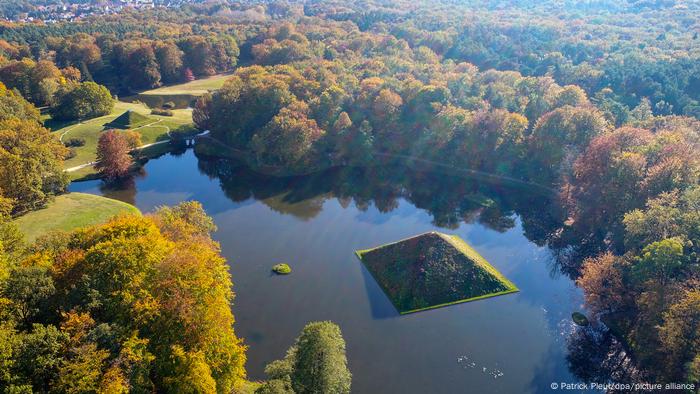
Green pyramids in Branicki Park

Autumn colors. Top view of the pyramid in the middle of the lake
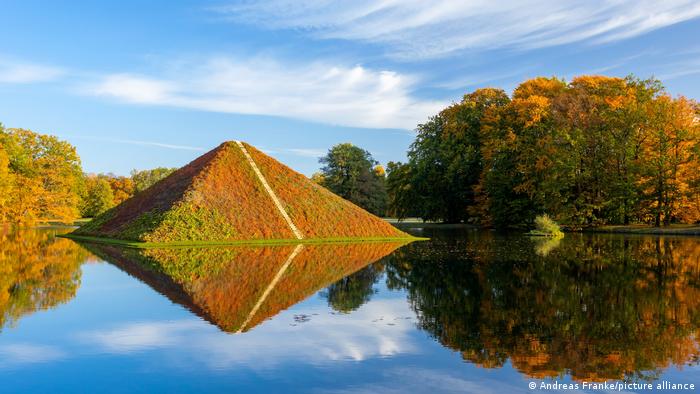
Pond shore lake pyramid
Ancient Egypt, of course, also interested the German nobility of past centuries. The park created in Branitz, Brandenburg by Hermann von Pückler-Muskau (1785-1871) has two pyramids. Inside one of them, located in the middle of the lake, he is buried.
The count went down in history as the creator of another park – a World Heritage Site, which is located in Bad Muskau and is the largest English park in Central Europe.
moritzburg
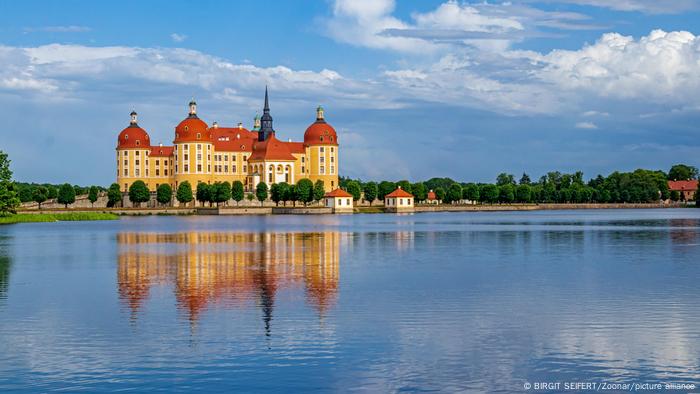
Moritzburg – the same castle from “Three Nuts for Cinderella”
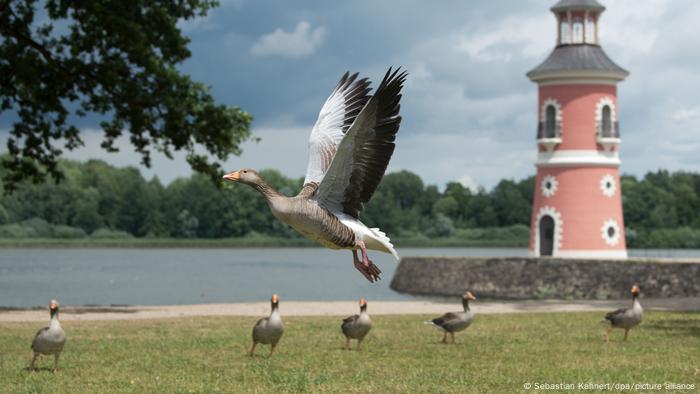
Lighthouse in Moritzburg Castle Park
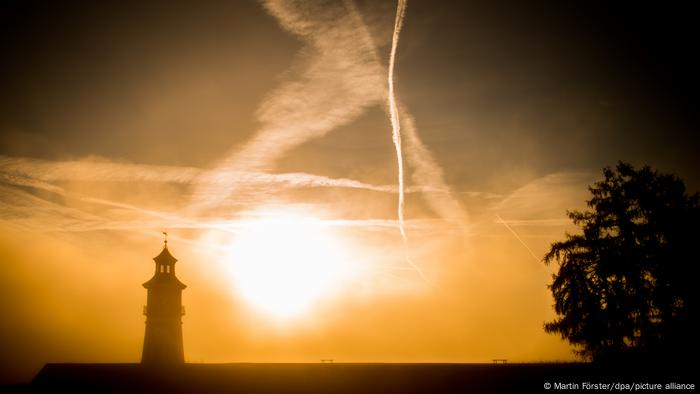
Morning fog on the lakes of Moritzburg
We’ll stay close to the water, but we’ll move to Saxony. It doesn’t have access to the sea, but that’s no reason not to build a lighthouse here. This lighthouse is located on Great Pond in Moritzburg Castle Park. It was erected to mimic naval battles after Count Alexei Orlov, who was visiting here, impressed Elector Friedrich August I (1750-1827) with stories about the Battle of Chesma.
Linderhof
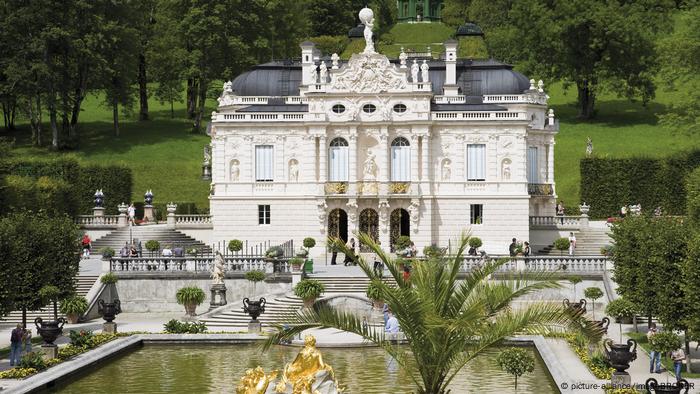
Linderhof Castle
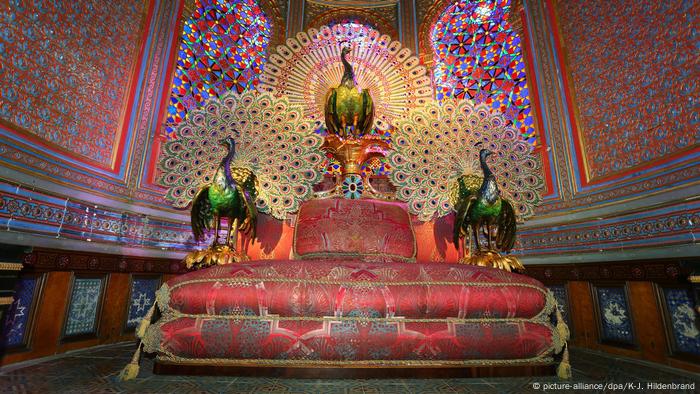
The Peacock Throne was commissioned by the Bavarian King Ludwig II in 1877 for the Moorish kiosk in Linderhof Castle Park. Luxurious oriental-style sofa upholstered in silk and decorated with three peacocks
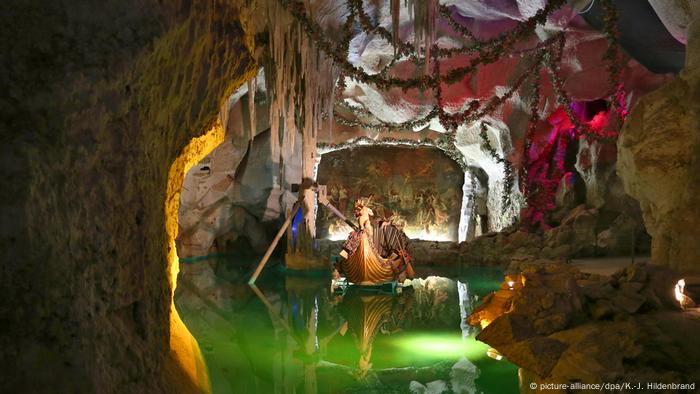
“Venus Grotto”
Linderhof Castle is the only residence founded by the Bavarian monarch Ludwig II (1845-1886) that was fully built during his lifetime. It is located about 30 kilometers from Garmisch-Partenkirchen. In the castle’s park there is the so-called “Venus Grotto”, where this “fabulous king” loved to ride a boat and immerse himself in his dreams and fantasies.
Sanssouci
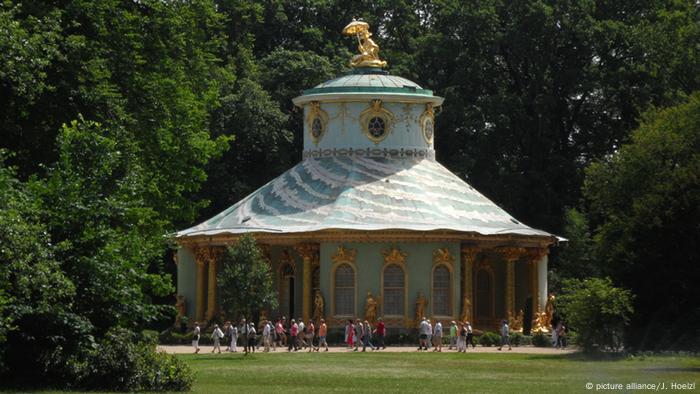
Chinese tea house in Sanssouci Park
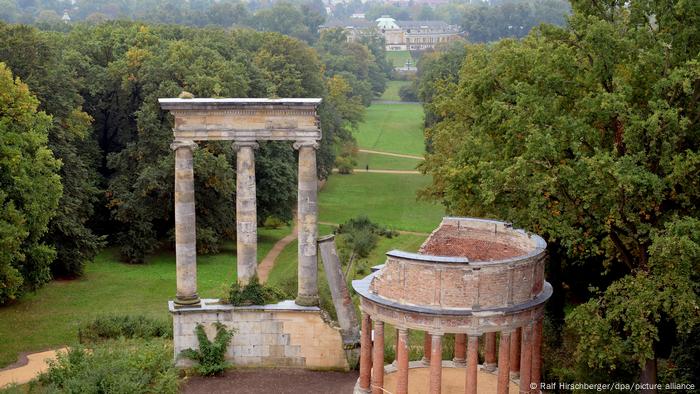
“Ancient” ruins near Sanssouci Castle
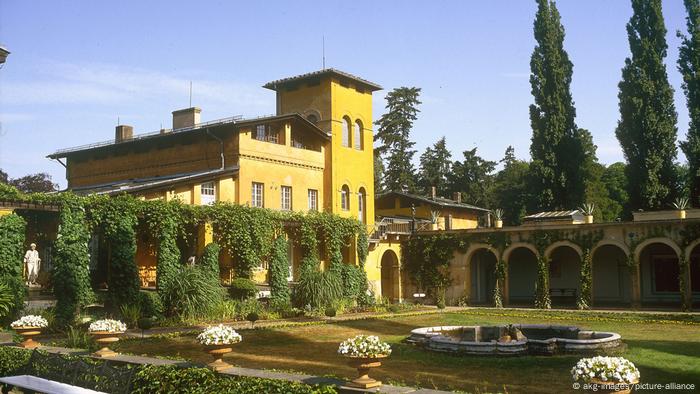
Garden Villa and Roman Baths in Sanssouci Park
Italy, Egypt, Turkey… Also – China. Chinese teahouses and various rooms with precious porcelain and silk wallpaper were especially liked by German rulers in the Rococo era, when one of the popular stylistic devices was the use of motifs from medieval Chinese art – chinoiserie. This Chinese teahouse was built in Potsdam, in Sanssouci Park, for Frederick the Great.
To properly see the sights of Potsdam, you need at least a week. But let’s focus on just two examples. The first of these are the “ancient” artificial ruins from 1748, which the Prussian King Frederick the Great was able to admire while walking through his beloved Sanssouci Palace.
Prussian monarchs generally loved antiquity. The Roman baths were built in Sanssouci Park by order of Frederick William IV (1795-1861), when he was still Crown Prince. The project was designed by the famous architect Karl Friedrich Schinkel based on the sketches of the heir to the throne, who loved Italy very much and had great artistic talent.
Peacock Island
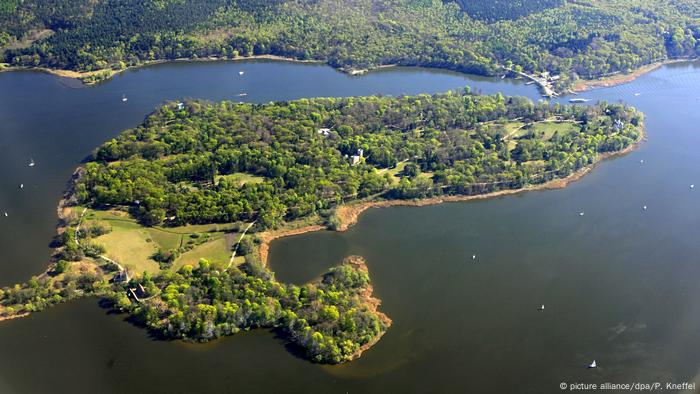
Peacock Island in Lake Wansee

The peacock shows itself in all its glory in the Rose Garden on Peacock Island
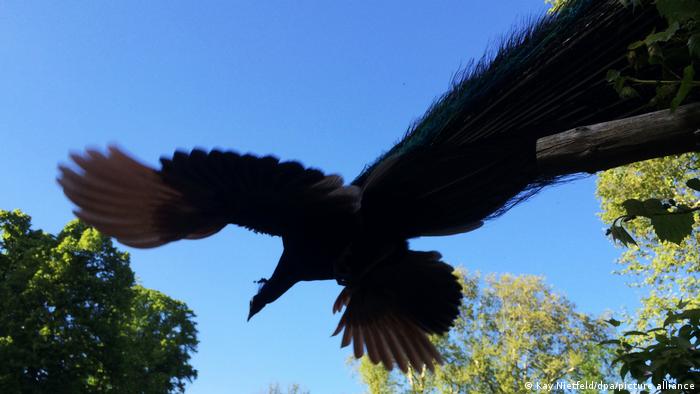
The island is inhabited by 35 to 100 peacocks. Data in different sources differ greatly.
The peacocks themselves are obviously not a special attraction, which cannot be said for the entire Peacock Island, located on Lake Wanse between Potsdam and Berlin. The history of the castle on this island is closely linked to the name of Countess Wilhelmina Liechtenau, lover of King Frederick William II (1744-1797).
Source: DW
Lori Barajas is an accomplished journalist, known for her insightful and thought-provoking writing on economy. She currently works as a writer at 247 news reel. With a passion for understanding the economy, Lori’s writing delves deep into the financial issues that matter most, providing readers with a unique perspective on current events.